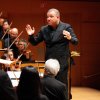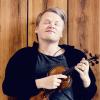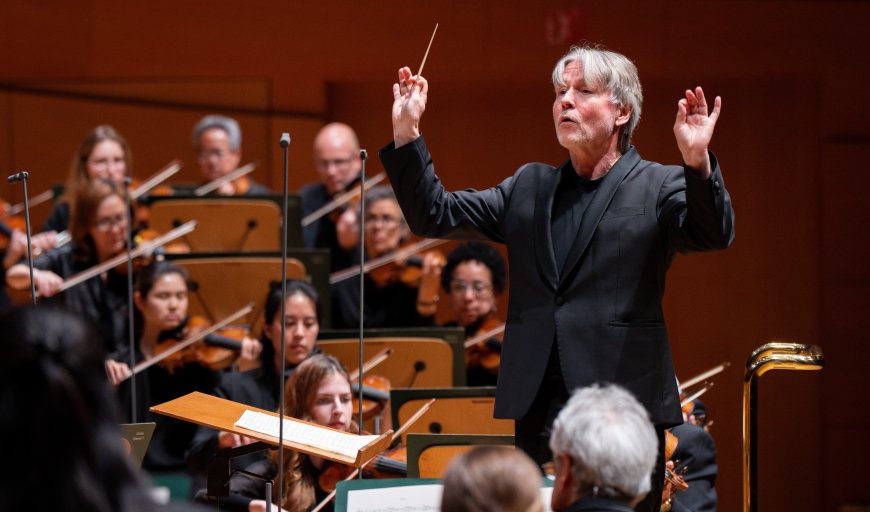
Whatever problems Esa-Pekka Salonen has faced at the San Francisco Symphony — which he is about to leave in June, before the Bay Area could really get to know him — we always roll out the welcome mat for him in Los Angeles.
Salonen again got a hero’s welcome from the audience on Sunday afternoon, May 4, at Walt Disney Concert Hall, where he’s leading his annual guest appearances as the Los Angeles Philharmonic’s conductor laureate. One hopes that the LA Phil will make even more use of its former leader, perhaps as an artistic adviser, in the interim between Gustavo Dudamel’s stepping down in 2026 and the appointment of the orchestra’s next music director.
Salonen returned accompanied by friends and collaborators. This past weekend’s program saw Bryce Dessner’s exciting 2021 Violin Concerto played by the adventurous Pekka Kuusisto. Frequent Salonen co-conspirator Peter Sellars could be spotted in the audience.
Sixteen years after the conductor’s term as music director here ended, the LA Phil still responds to him well. This could be felt immediately on Sunday in a marvelously lucid performance of Claude Debussy’s Prelude to the Afternoon of a Faun, a quiet manifesto for a new world of music when it debuted in 1894. Everything was together and transparent in texture, the flow sounding quite natural even as the pacing fluctuated, becoming urgent in the few extroverted bursts.
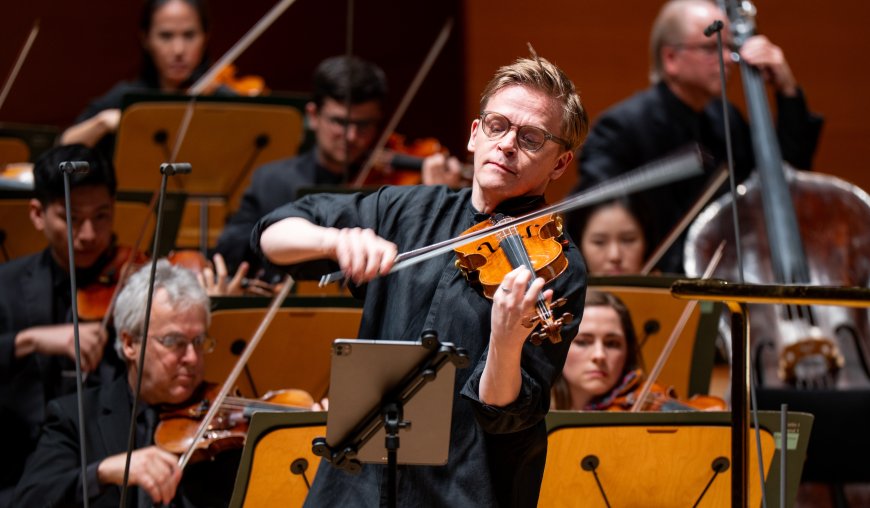
Dessner’s Violin Concerto, written for and dedicated to Kuusisto, was heavily geared toward the Finnish violinist’s affinity for folk music and is all the better for it. Sunday’s performance began with a series of clanking sounds from the percussion section as Kuusisto unleashed a torrent of moto perpetuo folklike fiddling that buzzed and fizzed for many minutes. Seven percussionists were kept busy throughout. Even as the winds piped up, Kuusisto kept going until the pace slowed with twinkling harmonics as the mallet instruments sparkled.
A linking cadenza of flutterings, scrapings, and some purposeful rawness of tone served as a bridge to the slow movement, which began to drag after a while. Eventually the rapid fiddling returned as the music machine whirled on to an exuberant finish. The piece is a throwback to traditional concerto form and works as a thoroughly accessible, energizing bit of contemporary music.
As one might have expected, Kuusisto turned to Scandinavian folk music for an encore: “The Immigrant Song,” a mournful 19th-century tune that’s supposed to have been a lament for Swedish emigres escaping a terrible winter in their homeland for a new life in America. In one touching passage, Kuusisto whistled as he played.
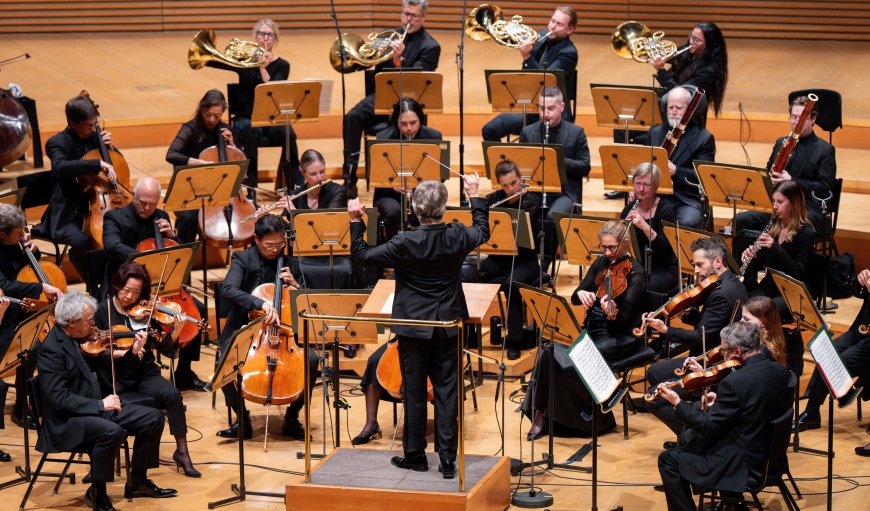
Beethoven’s Symphony No. 3 (“Eroica”) anchored the second half of the concert, a nod to Salonen’s long-ago “Beethoven Unbound” concerts here, in which Beethoven symphonies were contrasted with contemporary works. Like Debussy’s Faun, the “Eroica” also launched a musical revolution in its time.
Salonen’s interpretation was at times controversial. From the start, this “Eroica” was very fast, streamlined even, plowing ahead. There was no first-movement repeat (not necessarily a bad thing), and the big climaxes raced by without making brusque revolutionary impact. The funeral march, though, was taken at a comfortable pace, aside from a rushed middle section. The Scherzo had dash and vigor, and the variations in the Finale scampered along, the fugues breathtakingly and breathlessly played.
Unlike Kuusisto, who said he had to catch a plane, Salonen could not use that as a reason for hurrying since he’ll be here for another week presiding over a program that is right up his alley — Debussy and Béla Bartók sandwiched between a multidisciplinary celebration of Pierre Boulez’s 100th birthday.

